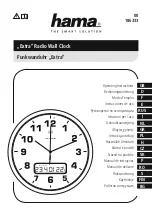
Feature User Guide
If the Location Reports are sent via SDS as a transport layer, a protocol based on existing standards is used.
Therefore, the reports can be sent both in TMO and DMO. SDS User Defined Data Type-4 provisions radios to
either use SDS-TL (for added reliability) or no SDS-TL (for saving air interface resources). The TETRA standard
Protocol Identifiers for GPS are used - 3 for simple GPS (no SDS-TL) or 131 when SDS-TL is used. The location
data are stored in the non-volatile memory of the radio, for later retrieval. If the radio is provisioned to provide user
indications, the feature operational status is indicated on the radio display.
Depending on the radio configuration, viewing the radio position and the status of the visible satellites is available.
The position may consist of longitude and latitude, UK eastings and northings, or Irish grid coordinates. The GPS
Location Service feature can be enabled or disabled as a whole using the CPS. It is possible to configure the feature
parameters using the CPS, or over the air. The CPS configuration provides a default profile. The commands
received over the air may overwrite the default profile configuration. The profile assigned to the radio determines
when to send location data, what data to send with what accuracy and to what address. All data requests and
configuration commands received over the air are checked to confirm they have come from a trusted source. Only
ISSIs in a specified range may send location commands.
Ensure that the radio and application receiving location messages from the radio has been configured
with the same protocol ID. Otherwise the radio reports a failure when requested to send an Immediate
Location Report.
This is a selling feature.
Location
4.1 Enhancing GPS Performance
Sometimes the GPS feature is unable to complete a location calculation successfully. You hear an audible tone
indicating that your radio cannot see the satellites.
To maximize the ability of your radio to determine a location fix please note the following guidelines:
• Stay in the open — The GPS feature works best where there is nothing between your radio and a large amount
of open sky. If possible, go outside, away from tall buildings and foliage. While the performance in a building
is improved by moving closer to windows, glass with certain sun shielding films may block satellite signals.
• Position your radio to enhance reception — Signals from GPS satellites are transmitted to your GPS antenna,
which is in your radio antenna. Hold your radio away from your body, giving the antenna clear access to
satellite signals. Do not cover the antenna area with your fingers or anything else.
• Stand still — If possible, stand still until your radio is finished determining your location. Moving your
radio at a walking pace while your radio is calculating your approximate location may substantially decrease
GPS performance.
4.2 Enabling GPS
Procedure Steps
1
From the home screen, press MENU key.
4-2
-
















































